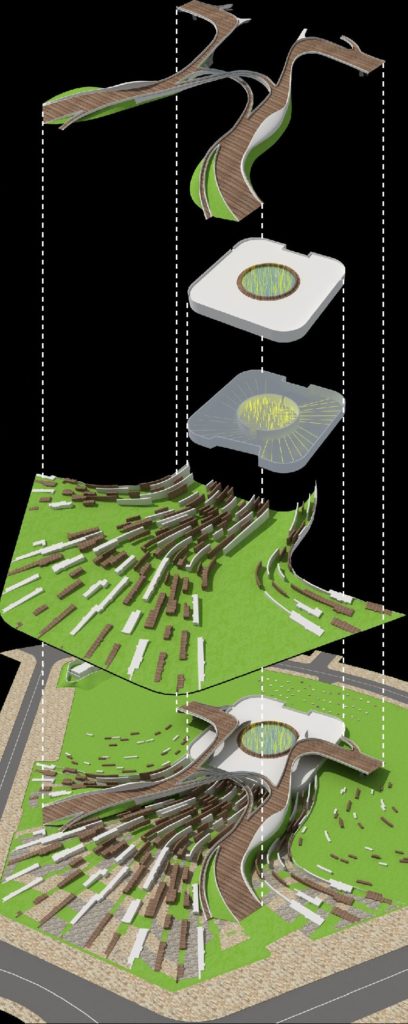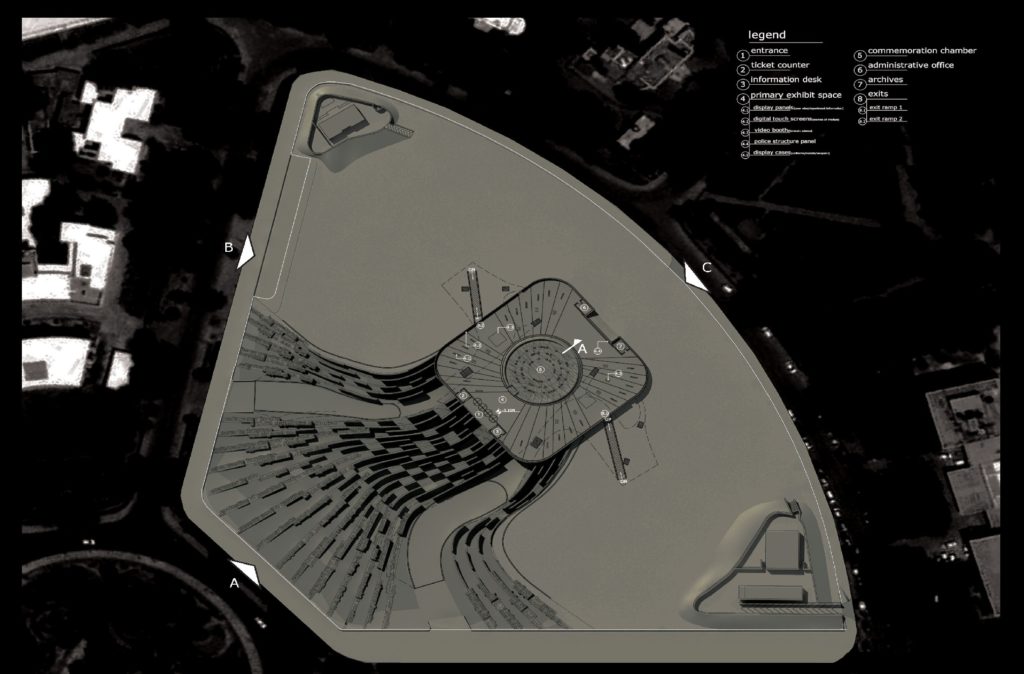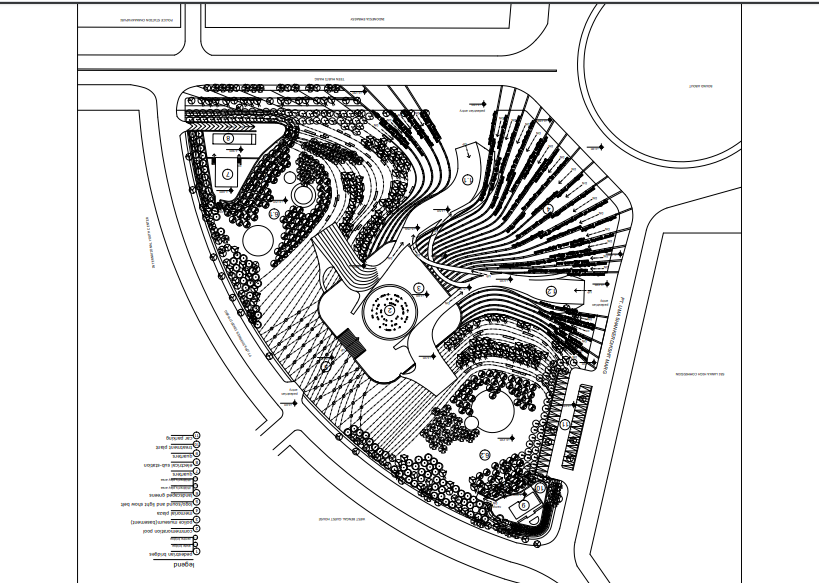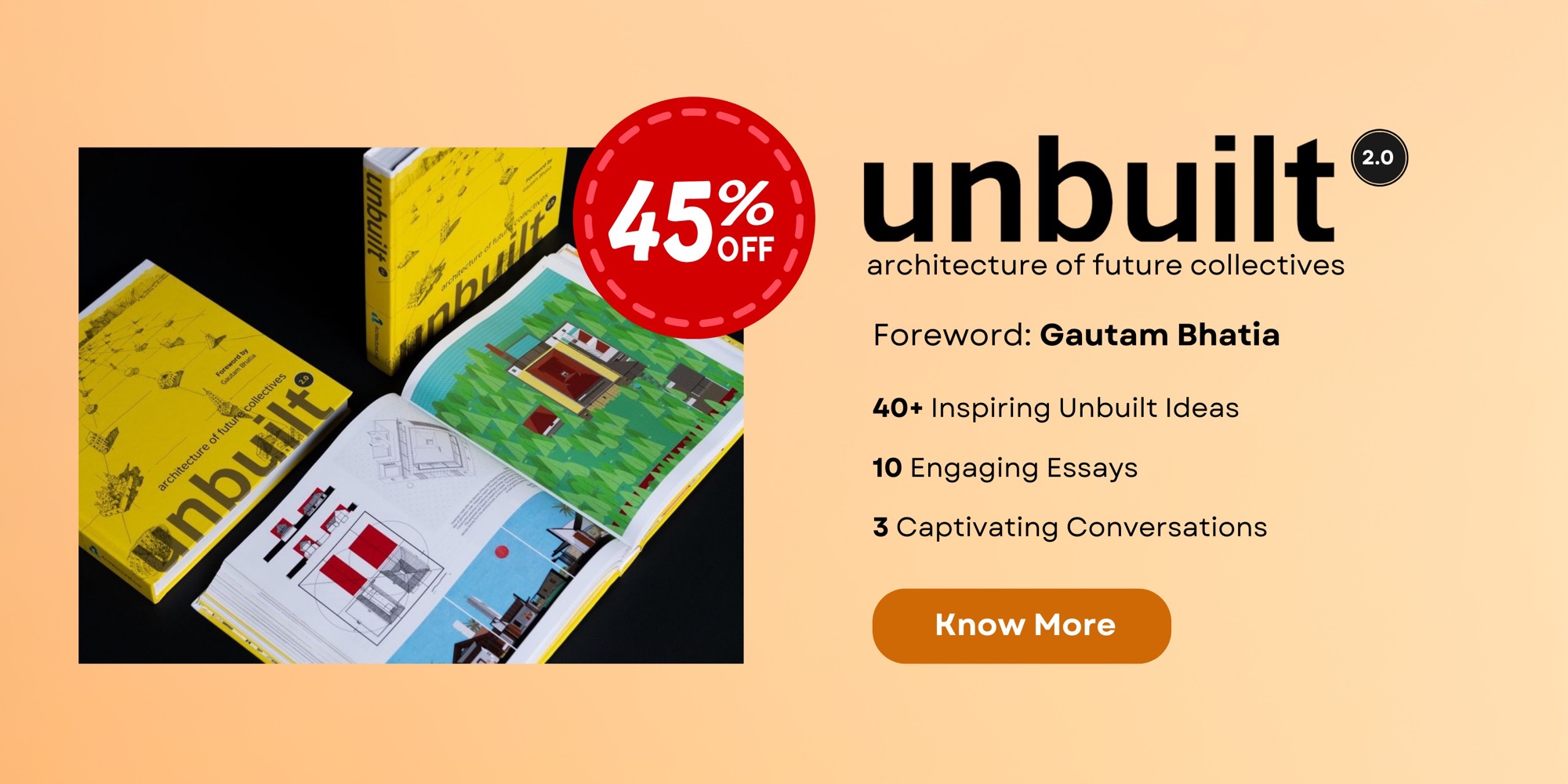
“Architecture is about monument and graves” – Adolf Loos.
This statement meant that human life can be commemorated by a column, a slab, a cross. The simplicity of this idea terminates the efforts put, the skills developed, the life witnessed by an individual.
Memories of lives lost can never be nostalgic
Markers that were symbols of an individual’s life and death must be changed, and this as profound effect on the idea of both memory and the monument.
The project manifests itself in the stability inherent in a system of charged site-lines. It suggests that human reason is at play when an extremely irrational and loose system is confined. The system also reveals the latent disturbances and the potential to lose balance with mild agitation to the confinement.
In searching for the inherent dynamism and its control, the design begins from identifying the police structure. 35 state and UT forces + 13 CPF1 provide the linework to animate the site. The 48 lines which originate from East and West site profiles, often suggesting multiple percolation [entries], succumb to the overpowering planning of the Chanakyapuri vista. This created a palette of site diagrams with simple rules of deployment and attraction. At this initial stage of design process, the generated information witnesses objective decisions [program, orientation, walkable gradients, elements] and subjective reasoning [aesthetic battle, Rashtrapati Bhawan] to extract recognizable feasibility.
In order to contribute to the city, we consciously wanted to address the stern planning of Chanakyapuri. The only energy that is enthused within the calm and serene diplomatic existence of Chanakyapuri is owing to the vehicles on Shanti Path. Those too are streamlined by the narrow lanes and the arguably low density. To execute this idea, motion was made inherent to the site planning.




The sources of circulation and of rest were carefully withdrawn from the established 48 site lines. The arteries of the proposal’s circulation are the twin walkways that wind from a width of 10.5 Mts to 2 Mts and elevate from 0.0 Mt to 6.5 Mts. With every turn and height alteration of the walkway, the eye traverses between views of the Memorial Plaza and that of the Commemoration Pool. This simultaneous existence between formal reality of an institutional structure and peaceful presence of sacrifices eliminates chronology and authority of a police personnel’s life. From this position we witness a gesture symbolic of National Police Forces paying their due regards to those who laid their life in the line of duty. The Commemoration Pool houses 150 memory lights [as of March 2011]. Each light stick representing a year and the number of personnels losing their life that year.
Once in the Memorial Plaza, the reduced eye level dissolves the visual clarity of the mottos, that existed from higher ground, but provides for a physical and psychological interaction. What once appeared as unidirectional paths now present themselves as a volatile field, recognized by a labyrinth of wooden slabs, changing ground texture and subtle lighting. An endless vision is obstructed by distant outcrops emerging from the ground plane.
The plaza is characterized by a system of four planes. The bottom ground plane that gently slopes towards the center of the site, the top plane which is defined by the slab heights, and the two side planes that undulate with seeming inconsistency. The spaces reveal, condense, narrow and deepen to provide a multilayered experience from any point. The disruption in the field destroys any notion of complete axiality and in turn proposes omni directionality.






At this point the idea of time and space becomes extremely personal. The disconnect from physical reality is apparent and a divergence between conception and perception appears. The registration of this divergence injects emotions and interactions. Some of which are planned. For example, Enthusiasm is catered with clues and information screens stippled in the plaza on the National Police, Discomfort allows for enhanced senses deciphering simplicity of plaza’s layout leading to the museum. But the emotions that are incidental make the monument a place for pride, loss, contemplation, elements of memory. This may cause a complete disconnect from the memorial and cause introspection and self-reflection. The memorial plaza encourages ‘my space my time’.
As Marcel Proust identifies the kinds of memory – Voluntary and Involuntary memory2 – former being nostalgia, located in the past, touched with sentiments that describe individuals’ interpretations of an event. The latter a living memory, which is an active memory in the present and devoid of any nostalgic connections. Memories of lives lost cannot be nostalgic.
We feel that the contributions of the police personnel cannot be measured by life or death. Even the government maintains this thought in its recognition for gallantry awards. Acknowledging the contributions can therefore only be a living condition in which the past too remains active in the present.
The museum is an extension of personal space. The dark room with light streaks defines the 12,500 Cu.M. volume. The series of exhibits use state of the art technology to create an environment appropriate for self-reflection. At the heart of the museum, the glow of the illuminated text of the pledge tends to de-materialize the walls of the Commemoration Chamber. Within the chamber, a discourse between the interior and exterior is prevalent. While the black insulated walls of the chamber cut any sensual connect with the immediate surroundings, the 150 suspended lights mildly glitter and serve as reflections of the same number of lights above.
While the chamber lights are open to all 365 days, the lights on the deck above are accessed only once a year on 21st October commanding respect and salutation from the ones in uniform only. A special connect with their fellows.
We propose that the time and space of the monument is different from the human experience and understanding. Unlike a traditional monument, the memorial is not understood by symbolic imagery, nor there is a goal that needs discovering. The duration of the individual grants no further understanding.
Sources:
- Police Organization In India, Commonwealth Human Rights Initiative
- Proust Marcel, In Search of Lost Time



Project Facts –
Typology: Public | Museum
Title: National Police Memorial | Competition Entry
Location: Chankyapuri, New Delhi, India
Client: Government of India (MHA)
Site Area: 06 Acres
Estimated Built-up: 25,000 Sq.Ft.

